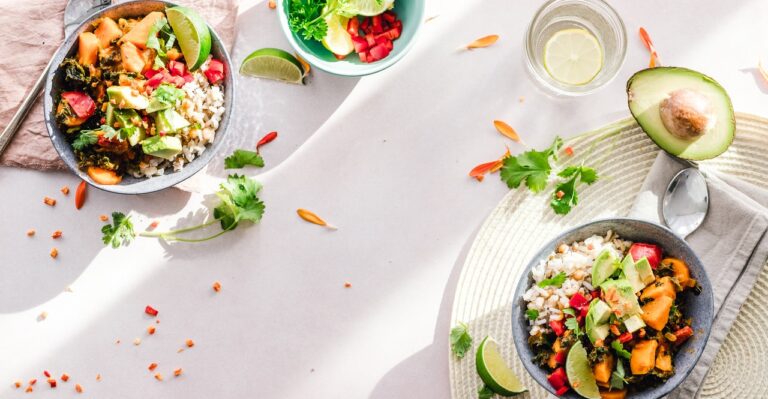
The keto diet has become one of the most popular kids on the block in recent years but is by no means new, borrowing principals from the globally renowned Atkins diet. People around the world are ditching the carbs in favour of high-fat nutrition that induces the body into the state of ‘ketosis”. But what does this mean and are there any benefits to living a carb-free existence?
What is ketosis?
The keto diet pushes your body into a state of ketosis, a metabolic state in which fat provides most of the fuel for your body. This happens when the body has limited access to blood sugar.
To place the body in a state of ketosis, you need to be eating less than 50 grams of carbs each day, though this will vary depending on gender, weight and height. But what are the benefits of doing this?
One advantage of restricting carbs is that the body’s blood sugar levels don’t spike after eating, which means lower insulin levels (insulin is a hormone that causes weight gain). This is why many people use the keto diet to lose weight.
Another effect of insulin release is the associated carb and sugar low, which can leave you feeling tired and dizzy, particularly if you’re eating unhealthy carbs like white bread, confectionery and pasta, to name a few. However, there is on-going debate surrounding whether this is a diet that can work long-term – we’ll explore this later – but for now….
What’s on the menu?
What most people want to know most when starting a diet is “what can I eat?”.
The foods typically associated with the keto diet are similar to those you might find as part of the Atkins diet. However, keto requires more discipline when it comes to treating yourself.
Whilst on the keto diet (unlike in the case of Atkins), it’s essential that your cheat days and treats consist of foods that are still low-carb.
Unfortunately, as little as one meal can disturb your metabolism and throw you out of ketosis, resulting in symptoms of keto flu thereafter. If you’re still keen to treat yourself to carbs a couple of times a week, Atkins is probably more suitable for you.
Equally, if you’re a keen sportsperson who takes part in long-distance cardio sports, you might want to find a more balanced diet that makes it easier to replenish lost calories.
Foods that makeup part of the keto diet include red meat, fatty fish like sardines and salmon, butter, unprocessed cheese, nuts and seeds, healthy oils and low-carb vegetables.
Foods to avoid are high sugar foods, legumes and beans, low-fat and diet products and alcohol. Some of the more surprising foods that are a no-go for keto include many types of fruit and certain root vegetables like carrots and parsnips, which believe it or not, contain carbs.
To get the full benefits of keto, you will need to be prepared to invest time into researching and meal planning, to educate yourself on which foods are concealing those hidden carbs!
The case against
Scientists at the National Institutes of Health published research demonstrating people can burn more calories on low-fat diets and this has been backed up by experts who agree that in the end, people will lose weight on any diet, so long as they consume less than they eat.
This said, there are many people with issues like gluten intolerance and IBS who might benefit from cutting carbs (complex carbs in particular) from their diets, with a view to keeping stomach-related problems at bay.
One of the less pleasant elements of keto is “keto” flu. When the body adapts to no longer eating carbs, they develop some unpleasant symptoms such as nausea, vomiting, diarrhoea, irritability, headache and sugar cravings.
Inevitably, a drop in carbs and incidentally, sugar, is going to lead to changes in the body. These generally last around a week, though the severity will vary from person to person – some may not experience any at all. It goes without saying that those who have particularly carb-heavy diets will struggle the most to adapt to the keto diet.
Want to compare a few different diets before committing to one? Check out our blog The Best Diets To Try and pick the right one for you.



I think Ill give this diet a try. Two of my favourite foods I can eat which are salmon and steak 😛
I like doing a lot of research before going into diets like these, that’s how I found this post. Its informative and gives the pros and cons. Thanks!